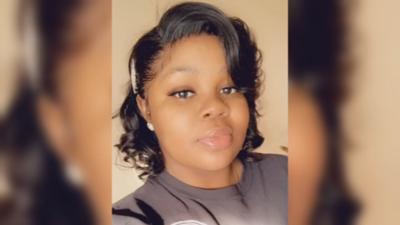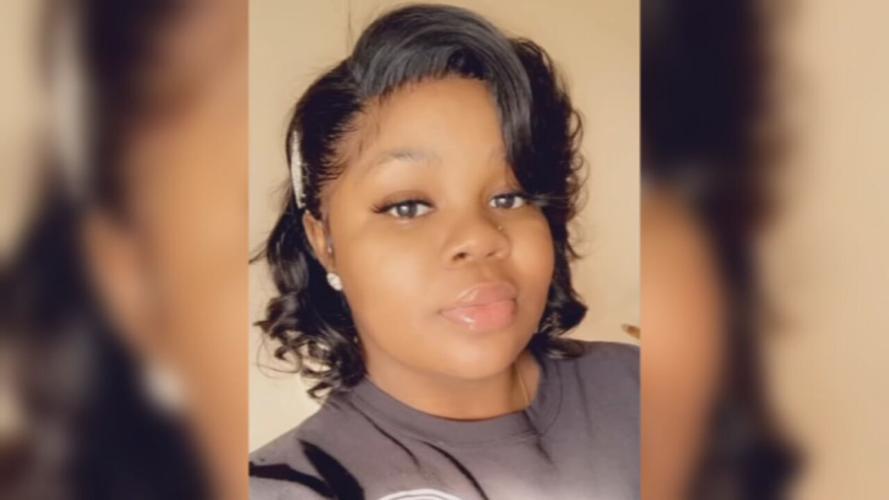LOUISIVLLE, Ky. (WDRB) -- Former Louisville Metro Police Det. Brett Hankison's reckless actions on the night of the 2020 Breonna Taylor raid "shocked" other officers, traumatized neighbors and put multiple lives at risk, a prosecutor told jurors in closing arguments Wednesday.
Hankison fired 10 shots into a home he couldn’t see into, with bullets ripping through the wall into a neighboring apartment where a family and a child were sleeping on March 13, 2020, said prosecutor Michael Songer, with the U.S. Department of Justice.
"Even when officers face the most serious threats, they can’t fire their weapon unless they know what they are shooting at," he told the jury in Hankison's federal retrial. "It’s just common sense. They can never just guess where a suspect might be."
But Defense attorney Donald Malarcik called the incident "12 seconds of chaos," pointing out that 32 shots were fired in the time officers burst through the door and Taylor was shot in an "unfathomable tragedy."
When police rushed in to serve a warrant, Taylor's boyfriend, Kenneth Walker, fired a shot that hit former Sgt. John Mattingly in the leg. Walker has said he believed the couple were being robbed.
Hankison had never been in a situation like what happened that night, where he had to make a "split-second" decision and believed Walker had an assault rifle, Malarcik said.
"It sounded to him like Kenneth Walker is walking down that hall, executing his fellow officers," Malarcik said. "He did exactly what he was supposed to do. He was acting to save lives."
The jury must decide whether Hankison, 48, used excessive force and violated the civil rights of Taylor and three of her neighbors. He faces a maximum sentence of life in prison.
The jury is made up of six women and six men, one of whom is black. They heard six days of testimony.
The jury deliberated more than four hours on Wednesday and will continue in the morning.
The judge will decide the sentence if there is a conviction.
Malarcik told the jury that prosecutors have not proven that Taylor was alive when Hankison was shooting, thus her civil rights could not have been violated.
Hankison's shots didn't hit Taylor because she was already on the ground after being killed by other officers, he said.
Songer, however, said Taylor only had to be alive when Hankison fired his first shot that went over her head, which was just a few seconds after the shooting began.
"Obviously she was alive when he was firing those shots," he said.
Also as part of his closing, Songer told jurors Hankison can’t justify his actions, so he and his attorneys spent most of the trial picking apart the wording of LMPD standard operating procedures outlining when police can use deadly force, specifically the argument that Hankison "perceived" a threat.
But Songer said the focus on SOP was mostly to distract that Hankison had no idea what he was shooting at, and "in fact" nearly shot a fellow officer, a neighbor and Taylor.
"Officer after officer came into court at this trial and told you that firing" repeatedly through blinded windows and a covered sliding glass door violated the police oath to "protect human life," Songer said. "He dishonored every one of them. … Officers testified this is not a close call."
Songer said all of the other officers also perceived a threat but none fired shots from outside into the apartment.
Hankison fired five shots into Taylor's living room from outside through blinded sliding glass door during the March 13, 2020, raid. He fired five more shots through a bedroom window that was covered by curtains. Some of the bullets flew into an adjacent apartment where Cody Etherton, Chelsey Napper and her then-5-year-old child lived.
During a police briefing before the raid, Hankison and other officers were not told that Walker might be at the home or given any information about the neighboring apartments, Malarcik said.
Hankison told jurors Tuesday he had no doubt officers were in danger as he had already seen Mattingly shot when police burst through Taylor's door to serve a warrant and he saw a "large muzzle flash" he believed was coming from an assault rifle.
In actuality, Walker fired one shot from a handgun and did not advance on officers.
Hankison testified he saw lights and believed he knew where the shooter was by the sound of the shots and where he was when police first entered the apartment.
"Even if you believe that is true, that is not a defense in this case," Songer told jurors Wednesday. "He just saw two windows on the side of an apartment building with light in them. He just guessed."
Malarcik countered that Mattingly supported Hankison’s actions after talking with him because he was trying to save the officer’s life.
"And that, ladies and gentlemen, is a legitimate law enforcement purpose," Malarcik said.
He also pointed out that none of Hankison’s shots hit anyone, despite all of the theoretical scenarios prosecutors said could have happened.
"Seven police officers volunteered to do their job and they showed up and Kenneth Walker, hiding in the darkness, shot John Mattingly," he said. "That’s not a hypothetical. That really happened."
Mattingly and Myles Cosgrove returned fire, hitting and killing Taylor. They were not charged in the shooting. Mattingly retired and Cosgrove was fired for failing to properly "identify a target," violating the department’s use of force policy and failing to use a body camera.
Investigators said Cosgrove fired the fatal shot, killing Taylor.
Malarcik noted that shots fired by Mattingly or Cosgrove also ended up in a neighboring apartment, above Taylor’s home.
Songer said Mattingly and Cosgrove fired through an open doorway and could see the person they were shooting at, as compared to Hankison who could not identify a target as he was firing.
"Those differences show what this case is about," Songer said.
The case stems from the botched raid of Taylor's home in the middle of the night in which police officers busted down her door to serve a search warrant related to a drug dealer who lived 10 miles away.
In 2020, police sought out a search warrant for Taylor's home as part of a broader investigation that focused on drug suspect Jamarcus Glover. Police believed Glover may have been using Taylor's apartment to receive drugs and store money.
When police burst in, Walker fired a shot that hit Mattingly in the leg. Multiple LMPD officers returned fire, shooting 32 times, killing Taylor, 26. No drugs were found in her home.
This is Hankison's third trial related to his actions the night of the raid. A federal jury in November 2023 deadlocked on two counts of civil rights violations and using excessive force.
A state Jefferson Circuit Court jury in March 2022 found Hankison not guilty on three counts of wanton endangerment.
Unlike last year, Walker did not testify during the trial. His name was removed from the indictment. Hankison was previously also charged with violating Walker's civil rights.
The city of Louisville paid $12 million to Taylor's family and implemented numerous reforms in the police department to settle a wrongful death lawsuit.
And the Department of Justice began a wide-ranging civil rights review in Louisville in the wake of Taylor's death.
Federal investigators strongly rebuked the actions of Louisville police, saying they believe the department and Metro Government for years engaged in practices that violated the U.S. Constitution and federal law, including excessive use of force and searches based on invalid search warrants.
Brett Hankison Trial Coverage:
- Brett Hankison defends 'split-second decision' to fire 10 times during Breonna Taylor raid
- Louisville officer shot in Breonna Taylor raid said he would have reacted the same as Brett Hankison
- Brett Hankison's actions in Breonna Taylor raid were 'unfathomably dangerous,' officers will testify
- Judge in Breonna Taylor case won't let jurors hear of Brett Hankison's prior 'aggressive' acts
Copyright 2024 WDRB Media. All Rights Reserved.














